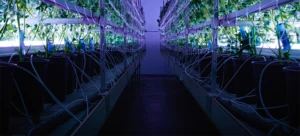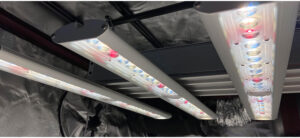What does a grow light ballast do?
Grow light ballasts act as the power source for the grow lights. All of our grow light kits come equipped with ballasts, but if you are purchasing individual components, you will need a ballast.
The role of the ballast is to help provide enough power to get the arc started when you turn your light on. After this, the ballasts job is to regulate the current, providing a steady beam of light. Without a ballast, the grow light would get too hot and pop. As HID grow lights age, they require more power for operation, and a ballast also helps with this.
When shopping for a ballast, it is important to consider the watts of your grow light. If the wattage of your ballast does not match up with your grow light, you will see poor operation. If the wattage of your ballast is too high, it could blow your lamp. If it is too low, it may not be able to get the lamp to fire.
A standard residential socket can operate a 120 Volt ballast with ease. If you are shopping for a commercial grow, you will need a higher supply voltage, such as the popular 240 Volt ballast.
Magnetic vs Digital
The magnetic ballast is a tried and true technology, and as simple as a ballast can get. They have become outdated with the introduction of the digital ballast, but some growers still prefer them for their easy, reliable operation. The biggest benefit of using an old school magnetic ballast is the lack of radio frequency interference (RFI), which can result with newer ballasts.
Nevertheless, the digital, or electronic, ballast, simply outperforms magnetic counterparts. The digital ballast operates 30% more efficiently, is much smaller, and thus produces less heat than a magnetic ballast. The biggest advancement digital ballasts made is their dimmable function. This allows growers to regulate wattages, and fine-tune the light intensity to what they want their plants to receive at a given time. The main complaint about digital balances is the RFI they create, so be sure your ballast features RFI or EFI shielding!
When selecting a ballast, be sure it is compatible with your grow light system. Ballasts are made for operation with specific grow lights. For example, if you are using a 315-watt CMH grow light, you need to ensure your ballast is a 315-watt CMH ballast.
Single ended vs double ended ballasts
If you are using double ended (DE) bulbs, it is important to select a ballast optimized for DE bulbs. Attempting to use a single ended (SE) ballast with a DE bulb can result in the lamp not firing. DE ballasts help lengthen the life span of your DE lighting system. You cannot go wrong getting a DE ballast, because they are designed to operate SE and DE grow lights effectively!
Do LED grow lights need a ballast?
LED grow lights feature a driver, which acts as a ballast. This is another reason LED grow lights are favored so heavily in the indoor gardening world. The driver comes standard in any LED grow light system you buy, which means once the driver fails, the LED grow light system needs to be replaced.
If you have any questions about selecting the right ballast, reach out to our experienced growers at 888-815-9763 and let us help you through the process! If you want to learn more about grow lights, visit our learning center!







